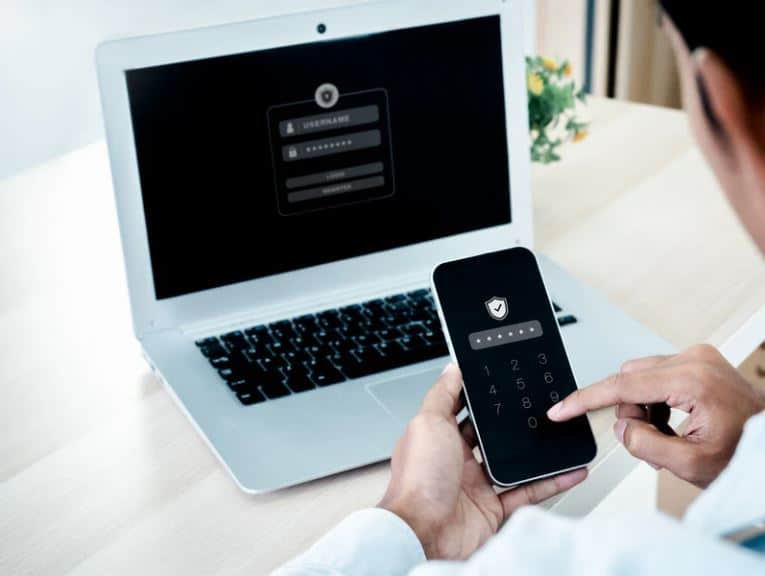
As cyber threats are more prevalent than ever, secure authentication methods to access your personal and work accounts – and protect the data they access – have become crucial. The reality is that hacking attempts are now so common that it’s no longer a question of if, but when, an attack might occur. Fortunately, Multi-Factor Authentication (MFA) and Two-Factor Authentication (2FA) have emerged as essential tools to protect sensitive information and secure login attempts. While these terms are often used interchangeably, there is at least one key point of distinction between them that is important to understand. In this article, we’ll explore these differences and find out what makes Multi-Factor Authentication and Two-Factor Authentication distinct.
Understanding 2FA
Two-Factor Authentication is a subset of MFA that specifically requires exactly two authentication factors. The basic concept is straightforward: after entering your password (the first factor), you must provide a second form of authentication, such as a code sent to your phone or a security question. These two factors work together to verify your identity, making it much harder for hackers to gain unauthorized access.
There’s also a related concept known as Two-Step Verification (2SV), which is a variant of 2FA. In 2SV, the two-step verification is the authentication of one single authentication factor twice, in two steps. This is pedantic and confusing, yet an important distinction that separates the two methods. Both Two-Factor Authentication and 2SV fall under the broader category of MFA, but since they are not identical, understanding their distinctions is crucial for selecting the right security approach.
Understanding MFA
Multi-Factor Authentication takes the concept of 2FA further by requiring two or more independent authentication factors. These factors can include a combination of passwords, physical tokens, biometric verification (such as a fingerprint scan), and more.
It is important to note again that while 2FA is a type of MFA, Multi-Factor authentication is by literal definition more than just Two-Factor Authentication. Think of it like the widely known geometry rule – a square is always a rectangle, yet a rectangle is not always a square. The main advantage of MFA is its ability to enhance security by requiring multiple independent factors that are not reliant on the same type of verification. This reduces the risk associated with compromised devices or data breaches, especially as the number of layers required to log-in increases.
Something to keep in mind is that either MFA or 2FA can contain the same method of authentication. Biometrics (a facial recognition or fingerprint scan), for example, are not restricted to a specific authenticator. 2FA and MFA differ solely in the number of layers – a concept we will explore shortly.
MFA vs. 2FA – Which is More Secure?
When it comes to security, MFA is generally considered more robust than 2FA due to the additional layers of authentication. The effectiveness of Multi-Factor Authentication is heightened when the factors are dispersed across different access points, such as physical tokens and separate devices, making it much harder for a hacker to breach all layers. However, using the same device for multiple factors can introduce vulnerabilities if that device is compromised. Therefore, spreading authentication factors across different platforms is key to maximizing security.
Choosing the Right Authentication Method for You
Selecting the right authentication method depends on several factors, including the potential impact on productivity, existing security measures, and budget. Companies should weigh the balance between security and practicality. For example, one organization that suffered a ransomware attack later attributed the breach to the absence of MFA. Initially, the company’s executives resisted implementing widespread Multi-Factor Authentication, viewing it as a burden on users. However, the head of IT stated that if stricter authentication had been in place across the company, the initial infection could have been prevented. After the attack, MFA was promptly implemented on external desktops across the company to bolster security.
Both 2FA and MFA are invaluable for organizations, especially those with remote or hybrid work policies. They offer a significant security advantage over relying on passwords alone, helping businesses manage access securely. Regardless of which method you choose, implementing either 2FA or MFA is far better than having no additional security measures in place.
Find a Solution with SWK
2FA and MFA are both widely used methods to secure employee logins, but while they share similarities, they represent different approaches to authentication. SWK can assist you in choosing the right authentication method based on your organization’s specific needs, ensuring a balance between security, efficiency, and practicality. Contact us today to speak with our team of cybersecurity experts. This one simple decision could save your company significant time and money in the long run.
